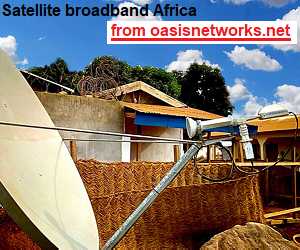| Home Login Register |
| Satellite Internet forum › Satellite Internet - Middle East › O3B Satellite Network |
|
Pages: 1
|
O3B Satellite Network(Read 7444 times) |
|
Iaio
Member
★★ Offline Posts: 1 |
Jan 13th, 2009 at 10:04pm
|
| Back to top |
« Last Edit: Jan 14th, 2009 at 3:02pm by Admin1 »
IP Logged
|
|
Eric Johnston
Senior Member
★★★ Offline Posts: 2109 |
Reply #1 - Jan 14th, 2009 at 2:57pm
|
| Back to top |
« Last Edit: Apr 7th, 2016 at 10:11am by Admin1 »
IP Logged
|
|
Maxim Usatov
YaBB Moderator
★★★★★ Offline Posts: 116 Czech Republic |
Reply #2 - Jan 14th, 2009 at 4:14pm
|
| Back to top |
IP Logged
|
|
Eric Johnston
Senior Member
★★★ Offline Posts: 2109 |
Reply #3 - Jan 14th, 2009 at 5:51pm
|
| Back to top |
« Last Edit: Feb 26th, 2015 at 11:35am by Admin1 »
IP Logged
|
|
Maxim Usatov
YaBB Moderator
★★★★★ Offline Posts: 116 Czech Republic |
Reply #4 - Jan 14th, 2009 at 9:12pm
|
| Back to top |
IP Logged
|
|
Pages: 1
|
Email me: eric@satsig.net
Powered by YaBB 2.5.2!
YaBB Forum Software © 2000-. All Rights Reserved.
Disclaimer, Terms of Use and Privacy Forum User Agreement Forum rules Cookie policy.


